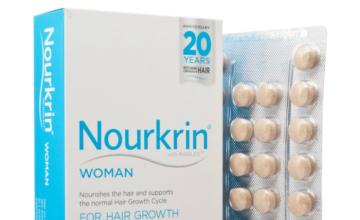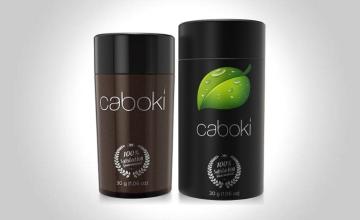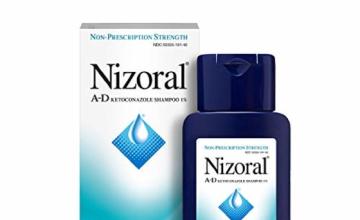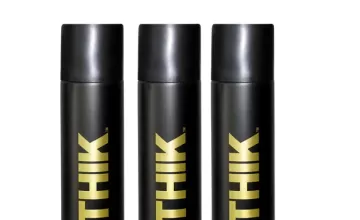Does Nourkrin Hair Nutrient Work to Stop Hair Loss?

Balding men and women considering any hair loss treatment should take caution to believe the many magnificent claims made by today’s advertising. Far too often, a lot of time and money is wasted on questionable treatments with little or no proof of success.
Nourkrin hair nutrient claims to promote hair growth and strengthen thinning hair in 80% of men and women suffering from almost any hair loss condition other than the self-inflicted trichotillomania (hair pulling) or traction alopecia. Below we evaluate Nourkrin, the "clinical study", and its ingredients to find out whether or not this hair loss treatment lives up to its promises.
What is Nourkrin?
Nourkrin recommends using their complete regime of products for at least 6 months for the best results. This includes extra strength, Man, and Maintain oral tablets, a shampoo, a conditioner, and a scalp lotion. Nourkrin claims their products can promote hair growth in men and women suffering from androgenic alopecia (genetic baldness), alopecia areata, alopecia totalis, alopecia universalis, and telogen effluvium. This is a very bold claim considering each balding condition occurs for varying reasons.
Ingredients
The active ingredients in the extra strength tablet include shark cartilage and shellfish extract containing glucosamine. Other active ingredients include silica kieselguhr (a natural form of silica), horsetail extract, acerola cherry extract with vitamin C, microscyrstaline cellulose, immunogloblin G protein, and fatty acids. In addition to the above, the Man product contains Omega 3 fatty acids and Fenugreek designed to improve scalp circulation. Maintain includes additional marine life proteins, minerals, silica, and vitamin C. The scalp lotion contains marine life protein extract compounds and aloe vera.
Nourkrin claims that the primary active ingredient glucosamine can rebuild and grow new tissue, including dormant hair follicles - suggesting successful hair regrowth. Though clinical studies prove that glucosamine might be effective in reducing joint pain, increasing joint lubrication, preserving joint space, protecting cartilage breakdown by inhibiting specific enzymes, stimulating cartilage matrix repair, and other anti-inflammatory actions, we couldn't find any evidence to support claims that it can stop hair loss or promote hair regrowth.
Clinical Study
Nourkrin conducted a clinical study of 60 people who took their products for 12 months. All subjects were over 18 years of age and suffered from at least some form of hair loss for at least one year prior to the study. During a 6 month double blind clinical study, 30 subjects took Nourkrin while the other 30 took a placebo. After 6 months, the 30 participants taking Nourkrin continued taking it for another 6 months while the 30 on the placebo were switched to Nourkrin for 12 months.
In the first 6 months, Nourkrin reports that 77% taking their hair loss treatment experienced an increase in hair growth and shaft thickness. After 12 months, 75% reported a decrease in overall thinning hair. 90% of women in the study reported overall hair improvement after 12 months. The hair counting method showed an average increase in hair count of 45 percent during the clinical study.
Though the above study sounds impressive, we don't know a lot about the participants nor can we be certain of the reliability of the study. All participants suffered from some form of thinning, but its cause for each patient hasn’t been disclosed. Additionally, clinical studies are considered more credible when they've been conducted or verified by third parties not interested in its financial success.
Another problem is that none of the active ingredients in Nourkrin are proven to stop hair loss. Therefore, their study is the only one balding men and women have to support such claims.
Possible Side Effects
Anyone allergic to shellfish should avoid using Nourkrin. Women who are pregnant or breast feeding should not use Nourkrin hair loss products. Consulting with a doctor before using this treatment is advisable.
Dosage
Nourkrin recommends taking 2 tablets daily for at least 6 months. Men and women over 176 lbs or those who smoke are advised to take 3 tablets daily. After 6 months, dosage can be cut down to one a day. Nourkrin also recommends using the shampoo, conditioner, and scalp lotion daily. The scalp lotion may be best applied in the evening and left on overnight.
Cost
60 tablets of the extra strength tablet costs about $75, the Man $65, the shampoo and scalp cleanser $12, the conditioner $13, and the scalp lotion $30. All in all, the Nourkrin Hair Recovery Program can get pricey after 6 months. FDA approved products like Rogaine (minoxidil)only runs approximately $15 a month or less and male treatment Propecia (finasteride)costs approximately $60 per month, not as expensive as Nourkrin.
Conclusions
Nourkrin boasts a big game, claiming high rates of success in reversing hair loss in men and women caused by varying conditions. Their clinical study also confirms its success rate however; the reliability of this study has not been verified by third parties uninterested in its financial success. Additionally, no clinical proof exists that any of the ingredients found in Nourkrin work to treat baldness.
Whether or not Nourkrin is the "real deal" is hard to determine with little evidence to support its claims. Therefore, those considering this treatment should proceed with caution and may want to consider exhausting proven treatments like Propecia and Rogaine first.








